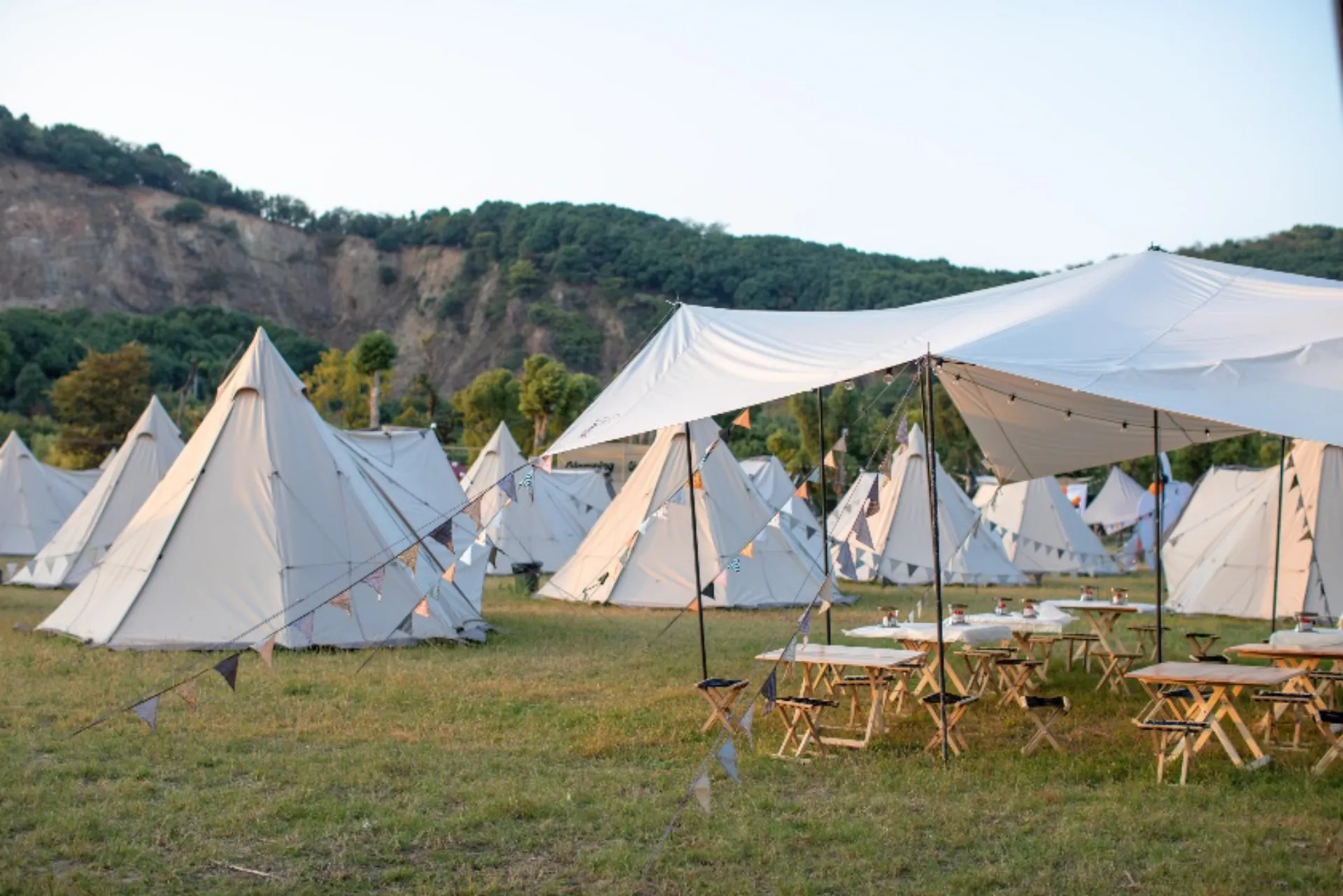The winter wind in the north is strong, especially in the mountains. It is the key to maximizing the performance of the camping tent. General camping tents include several main parts, outer tents, inner tents, tent poles, windproof ropes, ground nails, and some camping tents may not have inner tents (single-layer tents), and some have no windproof ropes. Only take the most common "cross" double-pole camping tent as an example (multi-pole, any shape is used as an example): pay attention to the wind direction of construction, try to build the side with the small windward side downwind, and some camping tents are square, just be careful not to point the air vent to the camping tent door.

After the camping tent is well supported, how to drive the ground nails is very important. First, make every corner of the inner tent taut. The ground nails should be driven into the ground diagonally. Press the camping tent firmly to the ground to prevent it from being pulled out. The windproof rope is centered on the camping tent, and it is driven into the ground nails radially. Be sure to tighten the rope and press the camping tent firmly on the ground. The key to driving the ground nails is also at an acute angle. Dig a small hole at the ground nail, punch the tent diagonally into the "small hole" and bury it on the fill to prevent it from being pulled out. Also, in camps with trees, windbreak ropes can be tied to trees instead of ground nails.
In winter, in extreme areas, because permafrost nails cannot be nailed in, you need to bring iron nails or steel nails used by ordinary carpenters with a size of more than 3 inches. If it is too heavy and there are many ground nails, you can bring one. Pull it out with pliers or an ice ax, and nail down the aluminum ground. Alternatives to ground spikes: When there are no ground spikes, you can also tie some items to one end of the windbreak rope and bury them in the snow or sand (such as long branches, ice axes, etc.), the snow will freeze quickly and be very strong. It is more laborious to take out the next day. Where there is a stone, you can tie it to the stone instead of nailing it. If the ground is not frozen hard, or in other seasons, tree sticks can also be used as ground nails. It is important to cut them into one foot long and sharpen one end. There are as many as necessary in the mountains. After the external work is done, many camping tents have tethers (or Velcro) fixed to the tent poles on the inside of the tents, which are fastened to the tent poles from the inside.
After the above points are done as required, your camping tent should be taut on all sides, if not, adjust the ground nails again. When your camping tent "booms" and "booms" like the head of a big drum. In this way, your camping tent can achieve the best wind resistance. Many camping tents with two poles crisscross have a rope connected to the top of the inner tent and the pole. Adhesive tape, in order to increase friction, the firmness of the top helps to resist the wind. Don't look at what I said these are "small" skills, they are like "one chopstick and ten chopsticks", which can make your Camping tents achieve the best wind resistance.
The above is about the construction method of camping tents in winter. I hope it will be helpful to you. If you are interested in tents, please come to consult. We are a professional tent supplier. The quality of tents provided is guaranteed and the price is reasonable.



